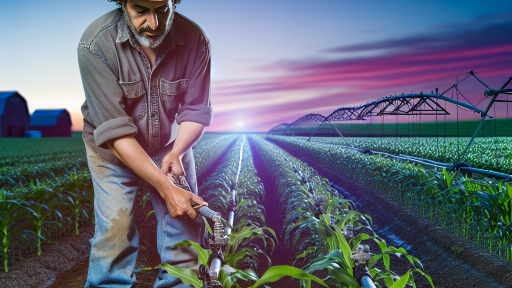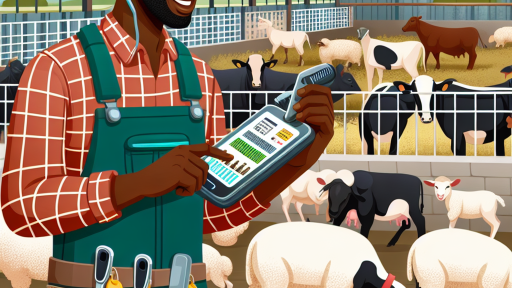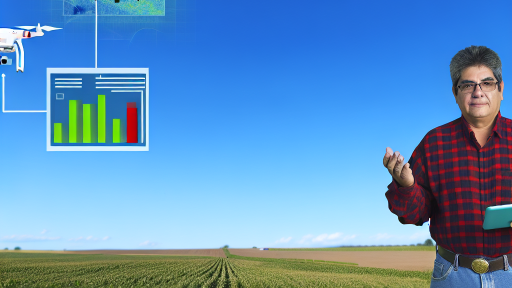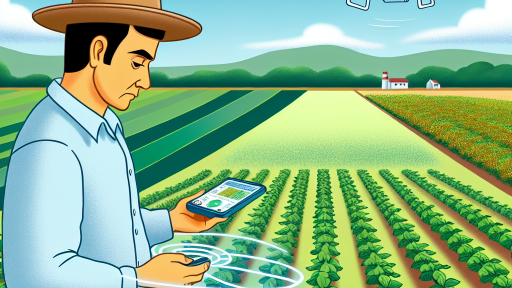Introduction to Smart Vertical Farming
Definition of Smart Vertical Farming
Smart vertical farming utilizes innovative technologies to enhance crop production.
This method involves growing food in vertically stacked layers.
It often incorporates controlled-environment agriculture techniques.
Additionally, it leverages advanced data analytics to optimize growth conditions.
Overview of Smart Vertical Farming Technologies
Smart vertical farming employs various technologies to increase efficiency.
Hydroponics is a common method that replaces soil with nutrient-rich water.
Aeroponics, another technique, uses mist to nourish plants without direct contact.
Moreover, vertical farms utilize sensors to monitor environmental parameters.
These sensors track humidity, temperature, and light levels.
Artificial intelligence plays a critical role in data analysis and automation.
Benefits of Smart Vertical Farming
This method offers numerous advantages over traditional farming.
First, it significantly reduces the land required for agriculture.
Second, it minimizes water usage through efficient systems.
Third, the controlled environments protect crops from pests and diseases.
Additionally, urban locations promote fresher food for local communities.
Transform Your Agribusiness
Unlock your farm's potential with expert advice tailored to your needs. Get actionable steps that drive real results.
Get StartedThis approach contributes to reducing transportation emissions, enhancing sustainability.
Challenges in Implementing Smart Vertical Farming
Despite its benefits, smart vertical farming faces several challenges.
The initial setup cost can be prohibitive for many farmers.
Moreover, technical expertise is necessary to operate sophisticated systems.
Energy consumption in such farms can also be a concern.
Investments in renewable energy solutions are crucial for sustainability.
The Future of Smart Vertical Farming
The future of smart vertical farming looks promising and innovative.
Research and development continue to refine these agricultural methods.
As technology advances, costs are likely to decrease over time.
Furthermore, public awareness about food security is growing.
With urban populations rising, vertical farming solutions will become essential.
Smart vertical farming is set to redefine agricultural practices.
Key Technologies in Smart Vertical Farming
Sensors
Sensors play a critical role in vertical farming systems.
They monitor environmental conditions such as humidity and temperature.
Moreover, sensors track plant health by measuring moisture and nutrients.
This real-time data supports informed decision-making in farming practices.
As a result, farmers can optimize growth conditions for better yields.
Examples of sensors include soil moisture sensors and climate sensors.
Each type adds to the overall efficiency of vertical farms.
Internet of Things (IoT)
The Internet of Things connects various devices in vertical farming.
IoT technology enables seamless communication between sensors and systems.
This interconnectivity facilitates real-time monitoring and management.
Farmers can receive alerts regarding any anomalies in system performance.
Furthermore, IoT applications gather historical data for trend analysis.
Showcase Your Farming Business
Publish your professional farming services profile on our blog for a one-time fee of $200 and reach a dedicated audience of farmers and agribusiness owners.
Publish Your ProfileThis analysis helps in predicting future farming needs.
Ultimately, IoT enhances operational efficiency in smart vertical farms.
Automation
Automation significantly improves the productivity of vertical farming.
Automated systems manage tasks such as planting and harvesting.
This reduces the need for manual labor, saving time and resources.
Robotic systems can operate around the clock for continuous production.
Additionally, automation allows for precise application of water and nutrients.
Optimizing these inputs leads to reduced waste and improved crop quality.
Overall, automation is essential for scaling vertical farming operations.
Benefits of Smart Vertical Farming
Resource Efficiency
Smart vertical farming dramatically optimizes resource use in agriculture.
It reduces water consumption by utilizing advanced irrigation systems.
Additionally, it minimizes the need for fertilizers through precise nutrient delivery.
This practice uses renewable energy sources, enhancing sustainability.
Moreover, vertical farms require less land space compared to traditional farming.
As a result, they can be established in urban areas, reducing transportation emissions.
Sustainability Practices
Smart vertical farming embodies eco-friendly practices benefiting the environment.
It encourages the use of organic growing methods.
Furthermore, it employs LED lighting, reducing energy consumption significantly.
The integration of automation improves operational efficiency, lowering labor costs.
The closed-loop systems recycle water, preventing waste and promoting conservation.
Enhanced Crop Yields
With smart vertical farming, farmers experience increased crop yields.
This technology allows year-round cultivation, irrespective of weather conditions.
Additionally, crops grown indoors are less susceptible to pests and diseases.
Consequently, there’s a decrease in pesticide use, promoting healthier produce.
This method also enables precise control over growing conditions, optimizing growth rates.
Community and Economic Impact
Smart vertical farms significantly contribute to local economies.
They create job opportunities in various sectors, including technology and agriculture.
Moreover, they supply fresh produce to nearby communities, improving food security.
As a result, urban populations gain access to healthier food options.
This innovative approach to farming fosters community engagement and awareness.
Explore Further: Understanding Automated Machinery in Agriculture
Challenges and Limitations of Implementing Smart Vertical Farming Technologies
High Initial Costs
Implementing smart vertical farming technologies requires significant financial investment.
This investment includes purchasing advanced equipment and infrastructure.
Additionally, ongoing operational costs can be substantial.
Farmers often struggle to secure funding for such expensive setups.
Consequently, many are hesitant to adopt these innovative approaches.
Technical Complexity
Smart vertical farming systems can be highly complex to operate.
They require expert knowledge in both agriculture and technology.
Farmers may need extensive training to manage these systems effectively.
Moreover, troubleshooting technical issues can be challenging.
Showcase Your Farming Business
Publish your professional farming services profile on our blog for a one-time fee of $200 and reach a dedicated audience of farmers and agribusiness owners.
Publish Your ProfileAs a result, reliance on specialized personnel increases operational risks.
Market Acceptance
Market acceptance of vertically farmed produce can pose a challenge.
Consumers are often unaware of the benefits of smart vertical farming.
Therefore, farmers must educate the market on their crops.
This education process can be time-consuming and costly.
Ultimately, market dynamics may hinder the widespread adoption of these practices.
Regulatory Obstacles
Regulatory frameworks may not yet fully support vertical farming practices.
Farmers face challenges in navigating existing agricultural laws.
Inconsistent zoning regulations can create additional barriers.
Compliance with health and safety regulations adds to the complexity.
These obstacles can delay or prevent new farming initiatives.
Limited Crop Variety
Vertical farms primarily focus on specific types of crops.
Leafy greens and herbs tend to dominate vertical farming systems.
This limitation can restrict farmer diversity in crop production.
Consequently, farmers may be unable to meet varied market demands.
Such constraints can impact profitability and sustainability in the long term.
Environmental Considerations
While smart vertical farming conserves space, it still poses environmental challenges.
Energy consumption for lighting and climate control remains high.
Furthermore, the sourcing of materials for infrastructure can be unsustainable.
Farmers must balance technological benefits with ecological impacts.
This balancing act can complicate decision-making processes.
Find Out More: Implementing GPS Technology in Precision Farming
Case Studies: Successful Implementations of Smart Vertical Farms
Introduction to Smart Vertical Farming
Smart vertical farming integrates technology into agriculture.
This innovative approach utilizes limited space efficiently.
Moreover, it maximizes crop yields throughout the year.
Several case studies showcase its potential in various settings.
Urban Leaf’s Vertical Farming Initiative
Urban Leaf operates a successful vertical farm in downtown San Diego.
This facility uses hydroponic systems to grow fresh herbs.
In addition, it employs LED lighting to enhance growth cycles.
As a result, Urban Leaf reduces food miles significantly.
Consequently, customers access fresher produce with minimal impact on the environment.
FarmedHere’s Sustainable Solutions
FarmedHere, located in Illinois, exemplifies sustainability in urban agriculture.
This company utilizes aeroponic technology to cultivate crops efficiently.
It operates an entirely indoor facility, optimizing water and energy usage.
FarmedHere effectively produces leafy greens without harmful pesticides.
Furthermore, the initiative contributes to local job creation.
AeroFarms: Redefining Agriculture in Newark
AeroFarms is revolutionizing farming in Newark, New Jersey.
Its state-of-the-art facility features vertical towers for plant growth.
The farm uses a patented aeroponic technology for real-time monitoring.
This method allows precise control over humidity, light, and nutrients.
Showcase Your Farming Business
Publish your professional farming services profile on our blog for a one-time fee of $200 and reach a dedicated audience of farmers and agribusiness owners.
Publish Your ProfileConsequently, AeroFarms yields crops with higher nutrient density.
Green Spirit Farms: Community Engagement
Green Spirit Farms focuses on community-driven agriculture in Michigan.
This initiative integrates educational programs for local schools.
Students learn about sustainable practices and healthy eating.
Additionally, the farm provides fresh produce to local markets.
This approach strengthens community ties and promotes wellness.
Implications of Smart Vertical Farming Technologies
These case studies highlight the effectiveness of smart vertical farming technologies.
They demonstrate how technology can enhance productivity and sustainability.
As a result, vertical farming presents a viable future for urban agriculture.
Moreover, it offers solutions to global food security challenges.
Discover More: Benefits of Smart Irrigation for Modern Farmers
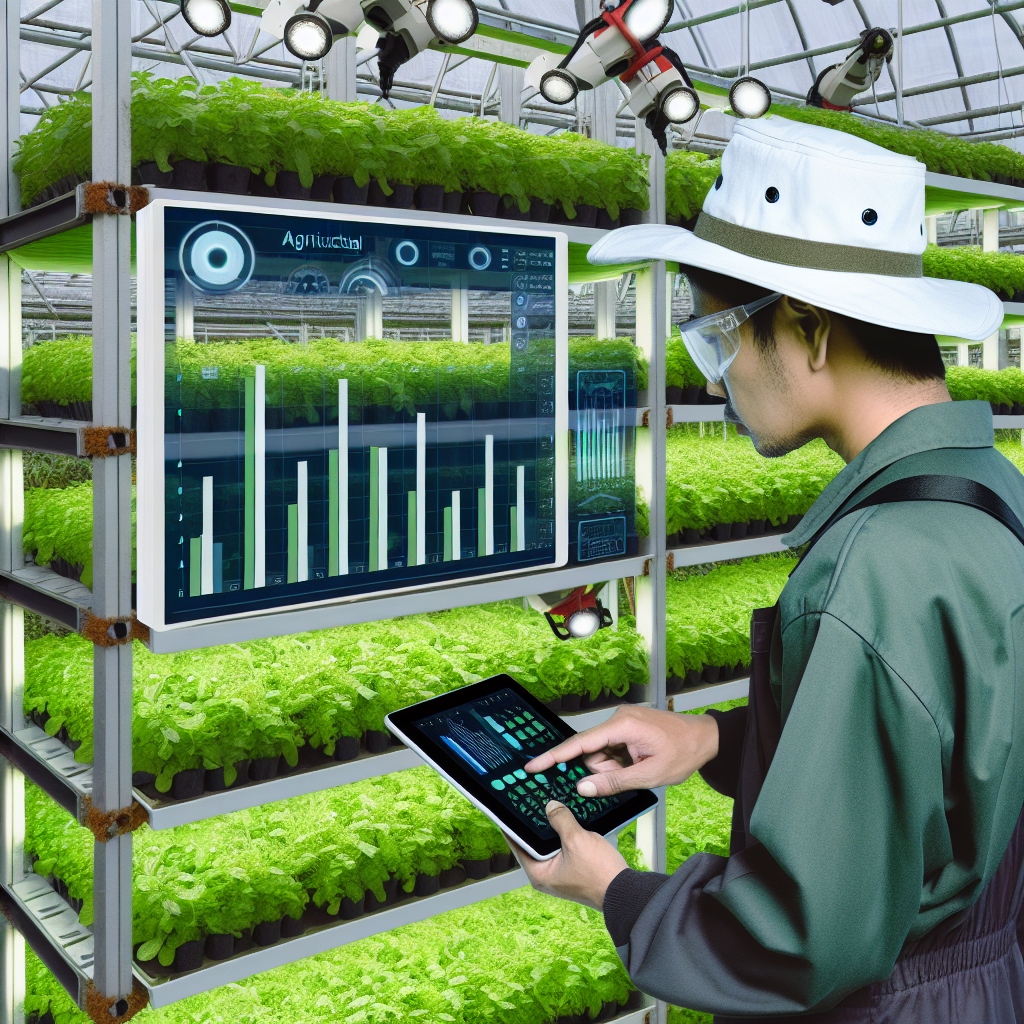
The Role of AI and Machine Learning in Enhancing Vertical Farming Operations
Introduction to AI in Vertical Farming
AI is revolutionizing vertical farming practices.
It helps farmers make data-driven decisions.
Moreover, AI optimizes resource usage efficiently.
Enhancing Crop Health Monitoring
Machine learning algorithms analyze plant health data.
These algorithms detect diseases early using imaging technology.
Farmers can treat issues before they spread widely.
Thus, crop yields improve significantly.
Precision Agriculture and Resource Management
AI enables precise control over water and nutrient delivery.
This targeted approach conserves both water and nutrients.
As a result, operational costs decrease over time.
Predictive Analytics for Optimizing Growth Conditions
Machine learning models predict growth conditions for crops.
They analyze factors such as light, temperature, and humidity.
Farmers can then adjust environmental conditions accordingly.
This leads to enhanced productivity and quality.
Automation and Robotics in Vertical Farms
AI-driven robotics automate labor-intensive tasks.
This includes planting, harvesting, and monitoring crops.
Automation reduces human error and increases efficiency.
Data Integration and Decision-Making Tools
Data integration platforms consolidate information from various sources.
Farmers access real-time data for informed decision-making.
Thus, they can track performance and adjust strategies quickly.
Future Prospects and Innovations
The future of vertical farming looks promising with AI advancements.
Innovations will continue to enhance sustainability and productivity.
Farmers will increasingly rely on AI for competitive advantages.
Gain More Insights: Essential Precision Farming Tools for Modern Farmers
Future Trends in Smart Vertical Farming
Emerging Technologies
Innovative technologies are shaping the future of vertical farming.
Aquaponics blends fish farming with plant cultivation.
This method enhances resource efficiency and reduces waste.
Hydroponics allows plants to grow in nutrient-rich water.
It eliminates the need for soil entirely.
Showcase Your Farming Business
Publish your professional farming services profile on our blog for a one-time fee of $200 and reach a dedicated audience of farmers and agribusiness owners.
Publish Your ProfileVertical aeroponics further improves space utilization and accelerates growth.
Data-Driven Agriculture
Data analytics is revolutionizing farming techniques.
Farmers leverage real-time data for precision farming.
IoT devices collect vital information about plant health.
This information aids in making informed decisions.
Machine learning assists in predicting crop yields.
Sustainable Practices
Sustainability remains a primary focus in future farming.
Smart vertical farms will prioritize energy-efficient technologies.
Solar panels and wind energy will power operations.
Water recycling systems will optimize resource use.
Reducing carbon footprints will become increasingly important.
Integration with Urban Spaces
Vertical farms will integrate seamlessly with urban environments.
Rooftops will transform into green spaces for agriculture.
This will reduce the distance food travels to consumers.
Urban farming will enhance food security in cities.
Community-based projects will foster local participation.
Consumer Engagement and Education
Public interest in sustainable food sources is growing.
Smart vertical farms will actively engage with consumers.
Educational programs will raise awareness about farming practices.
Transparency will be key in building consumer trust.
Farm-to-table initiatives will encourage local sourcing.
Economic Impacts of Smart Vertical Farming
Investment in Smart Vertical Farming
Investing in smart vertical farming requires a substantial commitment of resources.
New technologies, such as hydroponics and aeroponics, can incur high initial costs.
However, innovative companies like GreenLeaf Farms have leveraged these technologies successfully.
Investors often consider these farms as attractive opportunities for long-term growth.
Moreover, government incentives support the transition to vertical farming, enhancing its affordability.
Assessing Profitability
Profitability remains a crucial factor for potential investors.
Vertical farms reduce land usage while increasing crop yield significantly.
Consequently, this efficiency leads to lower operational costs over time.
Market demand for organic and locally-sourced produce boosts revenues for these businesses.
In addition, tech integration streamlines operations, further increasing profitability.
Job Creation and Economic Growth
Smart vertical farming creates a variety of job opportunities in urban areas.
These jobs include hydroponic technicians, farm managers, and data analysts.
As the sector grows, it contributes to the local economy significantly.
For instance, Urban Harvest has opened several facilities, providing hundreds of jobs.
This momentum complements the push for sustainable farming practices in cities.
Challenges and Risk Factors
Despite upward trends, challenges still exist within vertical farming.
For startups, access to funding may pose a barrier to entry.
Moreover, technology failures can lead to significant losses.
Additionally, competition with traditional agriculture continues to be fierce.
Showcase Your Farming Business
Publish your professional farming services profile on our blog for a one-time fee of $200 and reach a dedicated audience of farmers and agribusiness owners.
Publish Your ProfileAddressing these challenges is essential to sustainability and growth in this sector.
Additional Resources
Precision Agriculture: Benefits and Challenges for Technology …

